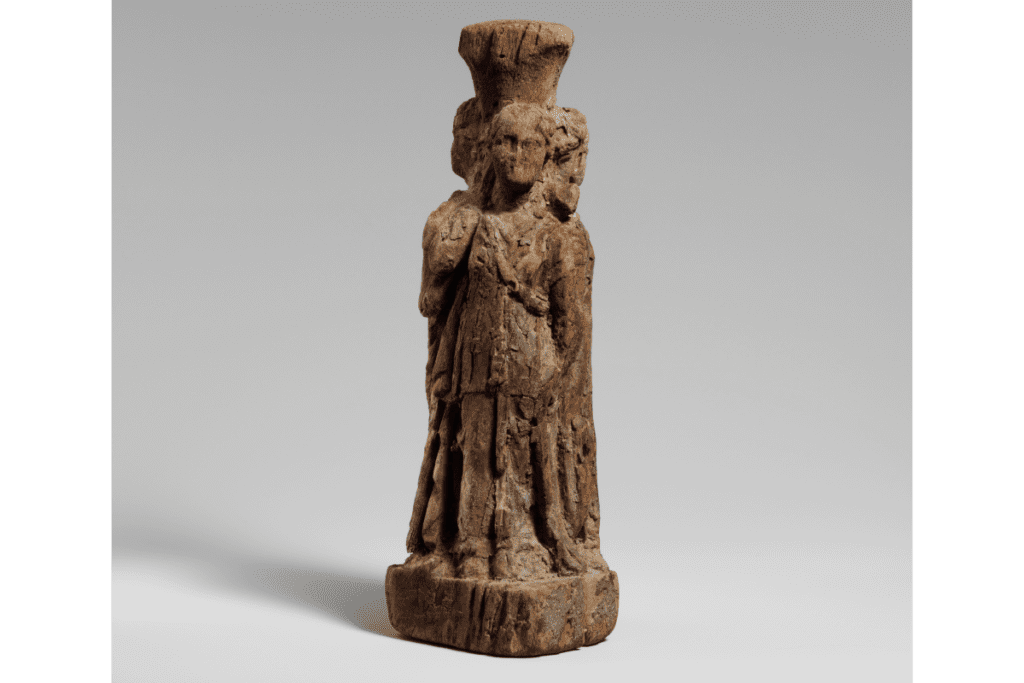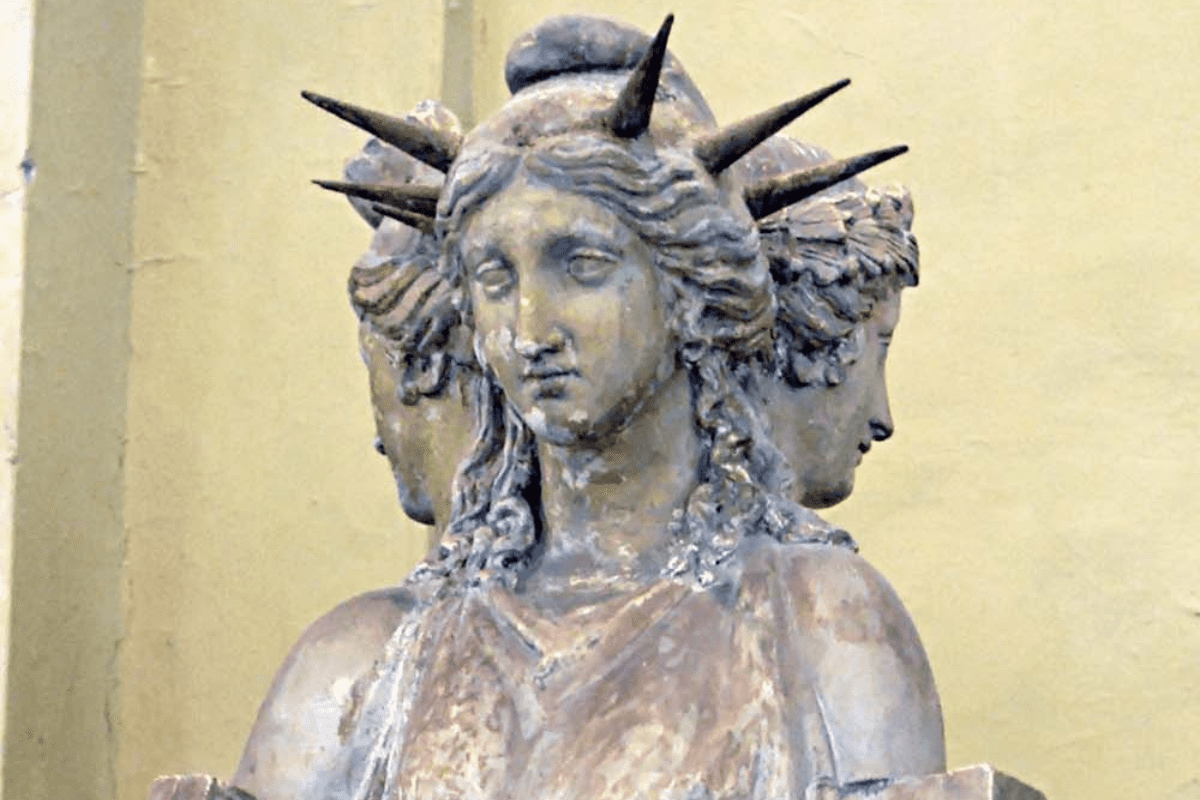Are Hekate and the Morrigan the same?
Are Hekate and Lilith the same?
Are Hekate and the Fates the same?
Are Hekate and Persephone the same?
Are Hekate and Artemis the same?
Are Hekate and Isis the same?
Are Hekate and Heka the same?
Are Hekate and Heqet the same?
In the ancient polytheistic world, few people would have asked these questions. I often see these questions online in Facebook groups, and people occasionally ask me.
My answer is: no. “No” is a complete sentence, by the way.
However, “no” alone would make for a terse blog entry, and we all experience Hekate differently. Perhaps your answer is different, but here’s why my answer is “no”.
Who is Hekate?
We consider Hekate a Greek goddess, but classical scholars dispute her origins. One popular theory is that Hekate originated in Caria, an area of western Anatolia (modern-day Turkey). Because she has a long, complex, and diverse history, Hekate can seem enormous, like a goddess of everything, but she has specific and unique divine features. These include liminality and everything that goes along with that, such as crossroads, doorways, thresholds, and the ambiguity and disorientation that can accompany a transition or rite of passage, such as childbirth and death. Hekate guides deceased souls to the Underworld and leads the restless dead who cannot enter it. She is a pale goddess of the night and witchcraft.
Who is everyone else?
Everyone else is someone else.
The Morrigan is the Irish “phantom queen” associated with war, fate, and the sovereignty of the land and its people.
Lilith is a mysterious, ancient figure who appears variously as a Mesopotamian demon, the first wife of the Biblical Adam, a succubus, a vampiric witch, a femme fatale, and a modern feminist sex goddess.
The Fates are goddesses that appear in various European mythologies and shape our destiny.
Persephone is the Greek queen of the Underworld.
Artemis is the Greek virgin, lunar goddess of the wild.
Isis is the Egyptian mother goddess, a wife and a mourner, associated with kingship and the kingdom’s protection, afterlife beliefs and funeral rites, and healing, magic, and wisdom.
Heka is the Egyptian personification of magic, typically represented as male.
Heqet is the Egyptian goddess of fertility, often represented as a frog.
Connections in Greek myth
There are clear connections between Hekate, Artemis, and Persephone. Hekate and Artemis share epithets and lunar associations. In art, they both appear young and wearing short tunics. Sometimes they are described as being the same or aspects of each other. In popular mythology, Hekate is Persephone’s companion in her journey to and from the Underworld. Magical texts such as the Greek Magical Papyri emphasise a syncretism between Hekate, Artemis, Persephone, and others such as Selene.
Hekate and the Fates appear in the myth of Galanthis, a friend of Alcmene who assisted her during childbirth. As a favour to Hera, the Moirae (Fates) and Eileithyia (goddess of childbirth) kept Alcmene in continuous birth pangs. Galanthis told them that Alcmene had given birth. The goddesses released their hold on Alcmene, and she gave birth to Heracles. Enraged by the deception, the Moirae punished Galanthis by transforming her into a polecat. Hekate felt sorry for Galanthis and appointed her as one of her sacred servants.
Shakespeare’s Macbeth may have further strengthened the link between Hekate and the Fates with its famous prophetic Three Witches, apparently led by the goddess.
Connections of the Dark Goddesses
Connections between Hekate, the Morrigan, and Lilith appear to be rooted in the idea that these are all Dark Goddesses. Kali is sometimes also included here.
These are goddesses called upon for shadow work, necromancy, hexing, and erotic magick–areas of magick (and life) that some people consider dark, dangerous, or taboo.
I use “Dark Goddess” as a convenient category; practitioners understand what I’m talking about when I say that. However, I generally reject ideas around light and dark regarding deities, magick, and our spiritual/life journeys. When it comes to the goddesses, it’s a gross reduction that leads to little more than superficial and stereotypical Emo/Goth treatment.
Connections to Egypt

We hear a lot about the Greco-Roman influence on Egypt. The Greek Ptolemies ruled Egypt for nearly three centuries, and then the Romans took control of Egypt for about 600 years. The Greek Magical Papyri, which contains spells and curses involving Hekate, come from Graeco-Roman Egypt. We hear a lot less about the Egyptian influence on Ancient Greece.
Martin Bernal was a British scholar of modern Chinese political history with a personal interest in this part of the ancient world. In an essay titled “Egyptians in the Hellenistic Woodpile”, he states:
“The crone goddess Hekate was central to the Eleusinian Mysteries, whose name, like that of nearly all Greek divinities, has no Indo-European etymology. Her name almost certainly derives from the Egyptian frog goddess Hkt or Hqt. Bother were versed in magic–ḥk3 in Egyptian–and fertility. There is, to my knowledge, only one connection drawn between Hekate and frogs. This comes in Aristophanes’ parody of the Eleunisian initiation, The Frogs, where the chorus condemns those who defile Hekate’s shrine. The chorus of frogs appears while the travellers are crossing to Hades on Kharon’s ferry. In the Egyptian Coffin Texts of the Middle Kingdom, Sokar’s ferry to the Underworld is reported to have ‘her bailers… [as] the frog goddess Hqt at the mouth of her lake.”
It’s worth noting that academics criticise Bernal for his speculative assertions and point to the lack of archaeological, linguistic, and historical data. I see this same speculation in online conversations about Hekate, Heqet, Heka, and magic. Is it possible? Yes, but it strikes me more like a superficial connection based on a few letters that appear the same in English (spelt with different hieroglyphics) and a relationship to magic that is not unique to any of them.
Isis-Hekate
There is a connection between Hekate and Isis.
The phrase “Isis in All Names” expresses her multi-faceted and all-encompassing nature. Isis, the Lady of 10,000 Names, the Myriad Named, could be seen in every goddess. Though she was never fully integrated into the Greco-Roman pantheons, Isis was equated with many goddesses, including Demeter, Persephone, Aphrodite, Fortuna, Artemis, and Hekate (follow the links to see photos). This syncretism is seen in invocations, literature, art and iconography, coins, and gemstones.
Isis and Hekate share attributes that link them, including magic, childbirth, serpents, dogs, torches, and the moon. The stunning Hellenic statuette of Isis-the-Magician depicts the goddess in a Hekatean style with three heads.
A debate in polytheism
Is Hekate the same as [insert a goddess here]? As I stated at the start of this piece, my answer is no, but it’s a little more complicated than that.
One of the great debates in contemporary Paganism, which I don’t engage in, is between soft polytheism and hard polytheism. In short, hard polytheism is the belief that gods are distinct, real beings. Soft polytheism holds that different gods may be aspects of a supreme deity, like different facets of the same diamond, personifications of natural forces, or psychological archetypes.
The primary reason I don’t engage in this debate is because it tries to apply a this-or-that logical consistency to something that, for me, is ‘all of the above’.
I treat all the deities as distinct and real, regardless of whether they’re a part of my pantheon. I also believe they are personifications and can function as archetypes. It’s not that I don’t ponder the nature of the gods; I do, but I am also comfortable with not knowing and never finding out.
I see it a little bit like this. My sister and I are alike in many ways. We have the same biological parents, were born in the same place, had similar upbringings, and people tell us we look alike (we don’t see it). We share genes and some traits, like our mannerisms, sense of humour, interests, and hot tempers. As sisters and human beings, we care about similar things, such as our parents’ health. But we are not the same person.
Literally, there are two of us. We look different, have different personalities, political and religious beliefs and opinions, and have different life experiences and personalities. Hot tip: gift her a good bottle of red wine for her birthday; give me a tarot deck.
My sister and I are not the same person, but we are made of the same stuff. That goes for you and me also. I don’t just mean flesh, bones, blood, cells, tissues, and organ systems. I mean oxygen, carbon, hydrogen, and other elements that were made in a star. We are not the same person, but we are both stardust. I like to think that the gods are too.
So, am I a hard polytheist or a soft polytheist? The answer is yes.

